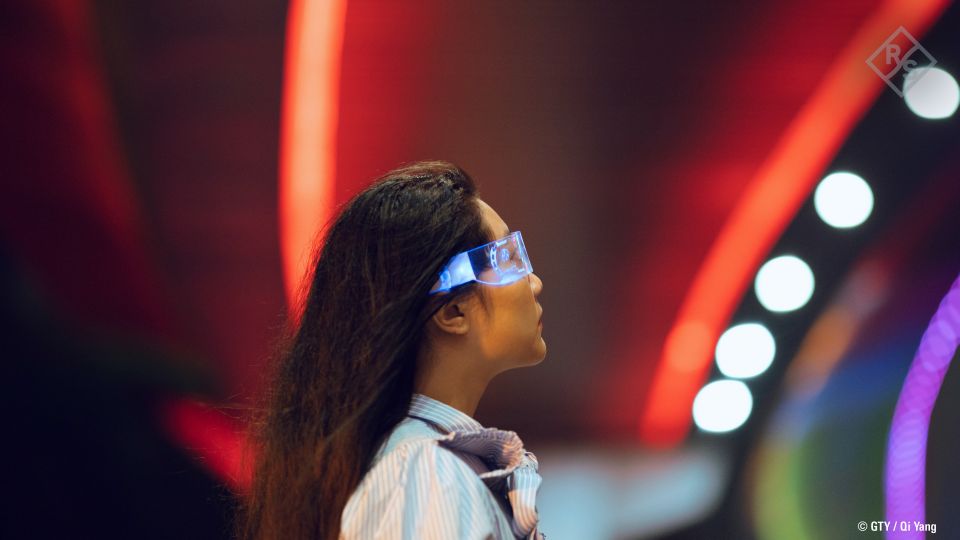German electronics firm Rohde & Schwarz is testing animated avatars that use augmented reality (AR) to make video calls in the metaverse and other extended reality-based applications.
Calls leverage an advanced form of 5G technology and are made using a smartphone and a pair of AR smartglasses. This is seen as crucial to making interactions in virtual worlds “more immersive and personal,” the Munich-based company announced.
Rohde & Schwarz is working with U.S. tech firm Slalom to develop the tools prior to market launch and is expected to demonstrate the technology at the Mobile World Congress 2024 in Barcelona, Spain, later this month.
Also read: Disney’s Holotile Floor Could Help Users Walk in the Metaverse
Animated avatar calls: How does it work?
The companies developed a test bed for applications that rely on extended reality—basically, concepts and platforms that include virtual, augmented, and mixed reality, like the metaverse.
Slalom built an animated avatar that runs on a powerful cloud-based computer, which is connected to a so-called 5G “one-box signaling tester” from Rohde & Schwarz known as ‘R&S CMX500’.
The signals testing device simulates a 5G network, allowing users to make a call and talk to the augmented reality animated avatar using a 5G-capable smartphone. People can see the avatar using a pair of smartglasses that are paired with their phones.
For the experiment, Rohde & Schwarz used a Motorola Edge 40 Pro smartphone linked to Lenovo’s ThinkReality A3 smartglasses, where the animated avatar was displayed. The system can also loop back user voices, the companies said, and in the future, it could be used to check the quality of audio using algorithms.
According to the firms, a major aspect of the avatar’s animation is that it is able to mimic head movements to show that a person is attentive and listening during calls.
The ability is important for people in the metaverse, who until recently appeared as legless avatars. It promises users a “sense of presence and engagement” during calls, as well as an experience that is “more immersive and personal.”
“The accurate rendering and timely display of such details on the end-user device are among the key performance indicators that are being further investigated by both companies,” Rohde & Schwarz said in a statement.
Sam Andrews, general manager at Slalom, added: “We have developed an innovative concept where we can assess and measure the end-to-end quality of XR experiences that considers network, device, and application to create seamless outcomes for end users and unlock new opportunities for enterprises.”


Building life-like metaverses
AR is a technology that blends the real and virtual worlds by overlaying digital information onto the physical. On the other hand, virtual reality is a simulated environment. The technology allows users to immerse themselves in a different world or scenario, which can either be realistic or imagined.
Both AR and VR are often accessed using headsets such as Meta’s Quest range of headgear or Apple’s Vision Pro. People can use the two realities to enter the metaverse, a network of interconnected virtual worlds where users can meet, work, and interact.
A key challenge for VR is how to move around in virtual worlds without breaking the immersion or feeling sick. Making phone calls, touching, smelling, having sex, and other human traits are much tougher in the metaverse.
But several companies are trying as much as possible to make life-like virtual worlds for the metaverse. Meta added legs to its Quest Home avatars after almost a year of waiting, in what is seen as a step closer to a more human-like metaverse.
However, the legs are only visible in a third-person view or when users interact with virtual mirrors, which means looking down won’t show the user their legs.
UK tech startup Freeaim Technologies is testing wearable shoes that enable users to walk “infinite distances in virtual reality in any direction” while staying within a small play space.


Last month, the Walt Disney Company revealed Holotile Floor, a new technology that the media conglomerate says could help people move around in any direction in virtual and augmented reality.
For haptics, there are new experiments demonstrating how the technology can be used to bring a realistic sense of touch to the metaverse. Meta is also developing photorealistic avatars for the metaverse, as recently showcased by CEO Mark Zuckerberg. Now phone calls look like a possibility.
- SEO Powered Content & PR Distribution. Get Amplified Today.
- PlatoData.Network Vertical Generative Ai. Empower Yourself. Access Here.
- PlatoAiStream. Web3 Intelligence. Knowledge Amplified. Access Here.
- PlatoESG. Carbon, CleanTech, Energy, Environment, Solar, Waste Management. Access Here.
- PlatoHealth. Biotech and Clinical Trials Intelligence. Access Here.
- Source: https://metanews.com/5g-enabled-ar-animated-avatar-calls-for-metaverse/



